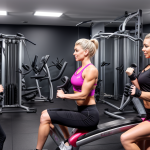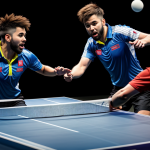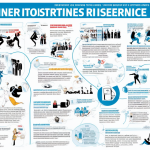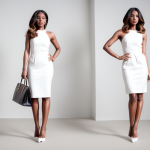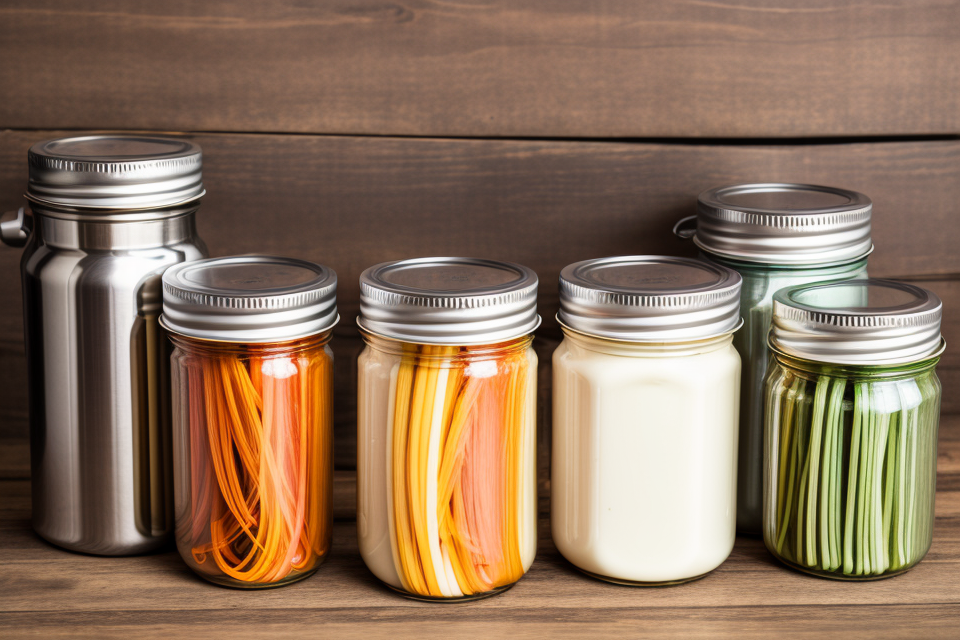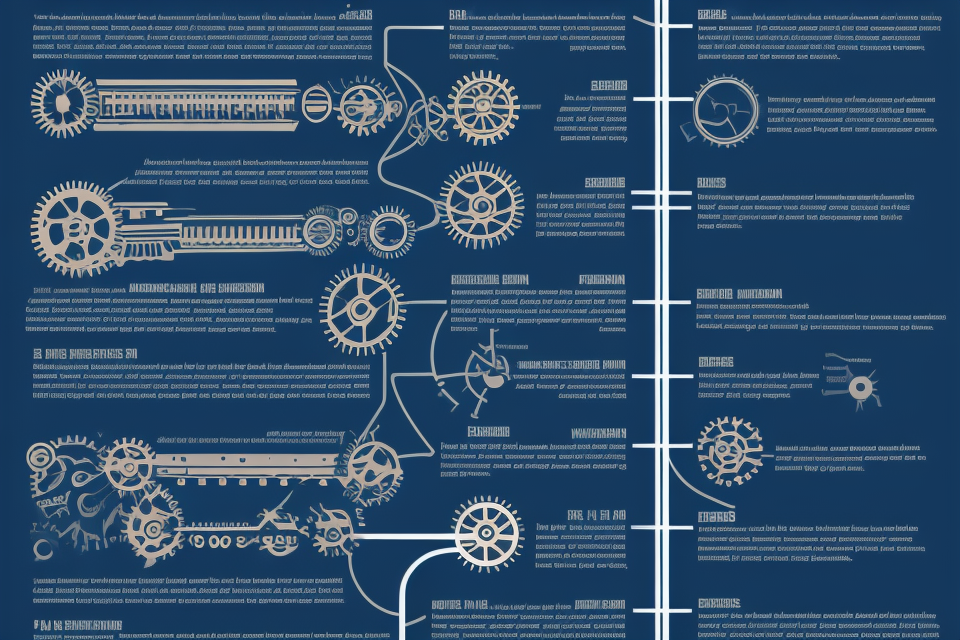Welcome to the world of motorcycle riding! As a new rider, it’s important to make sure you have the right gear before hitting the road. In this comprehensive guide, we’ll cover the essential gear that every new motorcycle rider needs. From helmets to gloves, we’ll go over each piece of gear and explain why it’s important for your safety and comfort on the road. So whether you’re a complete beginner or just need a refresher, read on to discover the must-have gear for your motorcycle riding adventures.
Understanding Your Motorcycle and Your Body
Assessing Your Riding Needs
Before you begin your journey as a motorcycle rider, it is crucial to assess your riding needs. This includes understanding your physical measurements, riding style and preferences, and the type and size of bike that best suits you.
Physical Measurements
Your physical measurements play a significant role in determining the right gear for you. Some of the essential measurements to consider include:
- Height: Your height is a crucial factor in determining the right size of the bike. You need to ensure that both your feet can touch the ground when you sit on the bike, and your knees are slightly bent.
- Inseam: Your inseam measurement is also crucial in determining the right size of the bike. You need to ensure that your legs are comfortable when you sit on the bike, and you can touch both feet flat on the ground.
- Arm length: Your arm length is essential in determining the right size of the bike and the type of gear you need. You need to ensure that you can comfortably reach the handlebars and operate the controls.
Riding Style and Preferences
Your riding style and preferences also play a significant role in determining the right gear for you. Some of the factors to consider include:
- Riding position: Your riding position determines the type of gear you need. For example, if you prefer an upright riding position, you may need a different type of helmet and jacket than someone who prefers a more aggressive riding position.
- Terrain: The terrain you will be riding on also determines the type of gear you need. For example, if you plan to ride on rough terrain, you may need different types of protective gear than someone who plans to ride on smooth roads.
Bike Type and Size
The type and size of bike you choose also play a significant role in determining the right gear for you. Some of the factors to consider include:
- Engine size: The engine size of the bike determines the type of protective gear you need. For example, if you choose a bike with a larger engine, you may need more substantial protective gear than someone who chooses a smaller bike.
- Weight: The weight of the bike also determines the type of gear you need. For example, if you choose a heavier bike, you may need different types of protective gear than someone who chooses a lighter bike.
By assessing your riding needs, you can ensure that you have the right gear for your motorcycle riding experience.
Choosing the Right Protective Gear
As a new motorcycle rider, it is essential to wear the right protective gear to ensure your safety on the road. Here are some tips on choosing the right protective gear:
Helmets
A helmet is the most critical piece of protective gear for motorcycle riders. It is designed to protect your head from impact and injury in the event of a crash. When choosing a helmet, consider the following factors:
- DOT or SNELL certification: Ensure that the helmet meets the safety standards set by the Department of Transportation (DOT) or the SNELL Foundation.
- Size and fit: The helmet should fit snugly and comfortably on your head. It should not be too loose or too tight. A poorly fitting helmet can compromise your safety.
- Visor or face shield: A visor or face shield can protect your face from wind, insects, and debris. Ensure that it is easy to operate and does not obstruct your vision.
- Noise reduction: A good helmet should reduce wind noise and protect your ears from the roar of the engine.
Jackets
A motorcycle jacket is designed to protect your torso and spine from impact and injury in the event of a crash. When choosing a jacket, consider the following factors:
- CE certification: Ensure that the jacket meets the safety standards set by the European Union (CE).
- Material: The jacket should be made of durable, abrasion-resistant material to protect your skin from scrapes and burns.
- Armor: Look for jackets with built-in armor in the shoulders, elbows, and back to protect your torso from impact.
- Pockets: A good jacket should have multiple pockets for storing your essentials, such as your phone, wallet, and keys.
Gloves
Motorcycle gloves are designed to protect your hands from impact and injury in the event of a crash. When choosing gloves, consider the following factors:
- Material: The gloves should be made of durable, abrasion-resistant material to protect your hands from scrapes and burns.
- Armor: Look for gloves with built-in armor in the knuckles and fingers to protect your hands from impact.
- Grip: A good pair of gloves should have a good grip on the handlebars to prevent slippage.
- Flexibility: Ensure that the gloves are flexible enough to allow for a full range of motion in your fingers and wrists.
Pants
Motorcycle pants are designed to protect your legs from impact and injury in the event of a crash. When choosing pants, consider the following factors:
- Material: The pants should be made of durable, abrasion-resistant material to protect your legs from scrapes and burns.
- Armor: Look for pants with built-in armor in the knees and hips to protect your legs from impact.
- Pockets: A good pair of pants should have multiple pockets for storing your essentials, such as your phone, wallet, and keys.
- Fit: The pants should fit snugly and comfortably on your legs. They should not be too loose or too tight. A poorly fitting pair of pants can compromise your safety.
Boots
Motorcycle boots are designed to protect your feet and ankles from impact and injury in the event of a crash. When choosing boots, consider the following factors:
- Material: The boots should be made of durable, abrasion-resistant material to protect your feet and ankles from scrapes and burns.
- Armor: Look for boots with built-in armor in the ankles and toes to protect your feet and ankles from impact.
- Grip: A good pair of boots should have a good grip on the footpegs to prevent slippage.
- Comfort: Ensure that the boots are comfortable to wear for long periods. They should not cause blisters or discomfort.
Additional Accessories
When it comes to motorcycle riding, there are a few additional accessories that can enhance your safety and overall riding experience. These accessories include communication systems, navigation devices, and hand signals.
Communication Systems
Communication systems are an essential accessory for motorcycle riders, especially those who ride in groups. These systems allow riders to communicate with each other via intercoms, which can be especially useful when navigating through traffic or making decisions on the road. There are several types of communication systems available, including helmet-based systems and clothing-based systems. Helmet-based systems typically involve a helmet with a built-in communication system, while clothing-based systems use wearable devices that allow riders to communicate with each other.
Navigation Devices
Navigation devices are another important accessory for motorcycle riders. These devices can help riders navigate through unfamiliar areas, find the best routes, and avoid traffic congestion. There are several types of navigation devices available, including GPS units, smartphone apps, and built-in navigation systems on some motorcycles. When choosing a navigation device, it’s important to consider factors such as accuracy, ease of use, and durability.
Hand Signals
Hand signals are an essential part of safe motorcycle riding, as they allow riders to communicate with other road users and indicate their intentions. There are several basic hand signals that all motorcycle riders should know, including signaling a left turn, signaling a right turn, signaling a stop, and signaling a slow or stopped vehicle. It’s important to use these signals consistently and clearly to ensure that other road users understand your intentions.
Overall, these additional accessories can greatly enhance your motorcycle riding experience and help keep you safe on the road.
Safety Equipment for the Road
Reflective Clothing and Accessories
When it comes to motorcycle safety, reflective clothing and accessories play a crucial role in keeping riders visible on the road. By increasing visibility, these items can help prevent accidents and keep riders safe.
Here are some examples of reflective clothing and accessories that new motorcycle riders should consider:
- Reflective tape: Reflective tape can be attached to clothing or accessories to increase visibility. It is particularly useful for riders who commute during early morning or evening hours when visibility is low. Reflective tape comes in a variety of colors and can be easily applied to clothing or accessories using adhesive.
- Reflective clothing: Reflective clothing is designed to be highly visible in low-light conditions. This can include jackets, pants, gloves, and boots. Some reflective clothing is designed to be worn during the day, while other items are specifically for nighttime use. When choosing reflective clothing, it’s important to select items that are comfortable and fit well to ensure maximum visibility.
- Reflective ankle boots: Reflective ankle boots are designed to provide maximum visibility for the lower legs. They are particularly useful for riders who spend a lot of time riding in low-light conditions. Reflective ankle boots can be worn with or without socks and are available in a variety of styles and sizes.
Overall, reflective clothing and accessories are essential for any new motorcycle rider. By increasing visibility, these items can help keep riders safe on the road.
Emergency Supplies
When it comes to motorcycle riding, it’s always best to be prepared for any unexpected situations that may arise. One of the most important things to have on hand is a comprehensive emergency supplies kit. This kit should include essential items that can help you stay safe and secure while on the road.
First aid kit
A first aid kit is a must-have for any motorcycle rider. It should contain items such as adhesive bandages, gauze, tweezers, scissors, and antiseptic wipes. Additionally, it’s a good idea to include a pair of gloves and a disposable mask in your kit. In the event of an accident, these items can help you treat any injuries you may have sustained until you can get to a medical professional.
Tool kit
A tool kit is also essential for any motorcycle rider. It should contain items such as a screwdriver, pliers, and a wrench. These tools can help you make any necessary repairs to your motorcycle in the event of a breakdown or other mechanical issue.
Spare parts
In addition to a tool kit, it’s also important to have spare parts on hand. This includes items such as spark plugs, air filters, and oil filters. Having these spare parts can help you quickly and easily make repairs to your motorcycle in the event of a breakdown.
By ensuring that you have a comprehensive emergency supplies kit, you can help keep yourself safe and secure while on the road. With the right supplies on hand, you can be prepared for any unexpected situations that may arise, giving you peace of mind and allowing you to focus on enjoying your ride.
Safety Apparel
As a new motorcycle rider, it is essential to prioritize safety while on the road. One of the most critical aspects of safety gear is wearing the right apparel. This section will discuss the different types of safety apparel that every new motorcycle rider should consider investing in.
Back Protector
A back protector is a vital piece of safety gear for motorcycle riders. It is designed to protect the spine from injuries in the event of a crash or accident. Back protectors come in different styles, including jackets, vests, and armor. It is essential to choose a back protector that fits well and is comfortable to wear.
Abdominal Protector
An abdominal protector is another crucial piece of safety gear for motorcycle riders. It is designed to protect the stomach and other organs from injuries in the event of a crash or accident. Abdominal protectors come in different styles, including pads and armor. It is essential to choose an abdominal protector that fits well and is comfortable to wear.
Elbow and Knee Sliders
Elbow and knee sliders are protective gear that cover the elbows and knees. They are designed to protect the joints from injuries in the event of a crash or accident. Elbow and knee sliders come in different materials, including kevlar and carbon fiber. It is essential to choose sliders that fit well and are comfortable to wear.
In conclusion, wearing the right safety apparel is crucial for new motorcycle riders. Investing in a high-quality back protector, abdominal protector, and elbow and knee sliders can help protect riders from injuries in the event of a crash or accident.
Practical Gear for Enjoying Your Ride
Storage Solutions
For new motorcycle riders, storage solutions are essential to keep your belongings safe and organized while you ride. Here are some popular options to consider:
- Saddlebags: Saddlebags are a classic storage solution for motorcycle riders. They attach to the sides of your bike and provide ample space for storing your gear, such as jackets, gloves, and helmets. Some saddlebags even come with weatherproofing to protect your belongings from the elements.
- Backpacks: Backpacks are a great option for motorcycle riders who prefer a more hands-free approach to travel. They can be worn on your back while you ride, allowing you to keep your hands on your handlebars. Some backpacks even have specialized compartments for storing your helmet and other gear.
- Panniers: Panniers are another popular storage solution for motorcycle riders. They attach to the rear of your bike and provide a spacious, weatherproof storage area for your gear. Panniers are particularly useful for longer rides or trips where you need to carry more items with you.
When choosing storage solutions for your motorcycle, it’s important to consider your needs and the amount of storage space you’ll require. Additionally, you’ll want to make sure your storage solutions are securely attached to your bike to prevent them from flying off during your ride.
Comfortable Clothing
As a new motorcycle rider, it’s important to wear comfortable clothing that allows you to enjoy your ride without any discomfort or distractions. Here are some key elements to consider when choosing your motorcycle riding attire:
Moisture-wicking fabrics
One of the most important features of motorcycle riding gear is moisture-wicking fabrics. These fabrics help to keep you dry and comfortable by drawing sweat away from your skin and evaporating it quickly. This is especially important during hot weather or long rides, as it can help prevent heat exhaustion and other issues.
Some popular materials for moisture-wicking fabrics include polyester, nylon, and spandex. These fabrics are lightweight, breathable, and durable, making them ideal for motorcycle riding. When choosing moisture-wicking fabrics, look for materials that are specifically designed for motorcycle riding, as these are typically designed to be more breathable and flexible than standard athletic wear.
Ventilated jackets
Another important aspect of comfortable motorcycle riding gear is ventilation. Ventilated jackets are designed to keep you cool and comfortable, even in hot weather. These jackets typically feature strategically placed vents that can be opened or closed to regulate your body temperature.
When choosing a ventilated jacket, look for one that is made from a lightweight, breathable material such as mesh or nylon. Some jackets also feature adjustable vents, which allow you to customize the level of ventilation to your specific needs. Additionally, look for a jacket that is comfortable and flexible, as you’ll likely be wearing it for extended periods of time.
Insulated layers
Finally, it’s important to have insulated layers in your motorcycle riding gear, especially if you plan to ride in cooler weather. Insulated layers can help keep you warm and comfortable, even in cold temperatures. Some popular materials for insulated layers include Thinsulate and Primaloft.
When choosing insulated layers, look for materials that are lightweight and breathable, as well as moisture-wicking. This will help prevent sweating and ensure that you stay comfortable throughout your ride. Additionally, consider investing in a jacket with removable insulation, which allows you to customize your level of warmth based on the weather conditions.
Navigation and Tracking
For new motorcycle riders, navigating through unfamiliar areas can be a daunting task. However, with the right navigation and tracking gear, riders can enjoy their ride without getting lost. Here are some of the essential navigation and tracking gear that new motorcycle riders should consider:
- GPS navigation systems: A GPS navigation system is an essential tool for any motorcycle rider, especially for those who are new to the sport. GPS navigation systems can help riders navigate through unfamiliar areas and avoid getting lost. These systems come with pre-loaded maps and turn-by-turn directions, making it easy for riders to find their way. Some GPS navigation systems also have features such as traffic updates, weather alerts, and fuel finders, which can be helpful for riders.
- Smartphone apps: In addition to GPS navigation systems, smartphone apps can also be a useful tool for motorcycle riders. There are several apps available that offer turn-by-turn directions, traffic updates, and weather alerts. Some apps also have features such as bike-specific routing, which takes into account the size and weight of the motorcycle when determining the best route. Riders can download these apps on their smartphones and use them as a navigation tool while riding.
- Rider safety apps: In addition to navigation and tracking, there are also safety apps that new motorcycle riders should consider. These apps can help riders stay safe on the road by providing features such as crash detection, emergency alerts, and roadside assistance. Some apps also have features such as bike-specific maintenance reminders, which can help riders keep their motorcycle in good condition.
Overall, having the right navigation and tracking gear can make a significant difference in the riding experience for new motorcycle riders. Whether it’s a GPS navigation system, smartphone app, or rider safety app, having these tools can help riders navigate through unfamiliar areas, stay safe on the road, and enjoy their ride.
Music and Entertainment
For many motorcycle riders, enjoying music and entertainment while on the road is an essential part of the experience. Here are some essential gear for new motorcycle riders to consider when it comes to music and entertainment:
Headsets
A good pair of headsets is essential for listening to music or taking calls while riding. Look for headsets that are comfortable to wear, have good sound quality, and are easy to use. Some popular options include Bluetooth headsets, which allow you to connect your phone or music player wirelessly, and wired headsets, which can be plugged directly into your phone or music player.
Speakers
If you prefer to listen to music or podcasts through speakers, there are a variety of options available. Some riders prefer portable Bluetooth speakers, which can be easily mounted to your bike or carried in your luggage. Others prefer larger, more powerful speakers that can be wired into your bike’s audio system.
Music players
Finally, you’ll need a way to play your music or podcasts. Many riders use their smartphones or tablets as their music player of choice, as they can easily connect to their headsets or speakers via Bluetooth. Other options include dedicated music players, such as the iPod or Sansa Clip, which can be easily mounted to your bike and offer long battery life.
Overall, investing in good music and entertainment gear can greatly enhance your motorcycle riding experience. With a wide range of options available, there’s something for every rider, whether you prefer to listen to music, podcasts, or audiobooks while on the road.
Camera and Recording Equipment
When it comes to capturing memories of your motorcycle rides, camera and recording equipment is a must-have. Whether you want to record your journey or simply take photos of your motorcycle and your surroundings, having the right gear can make all the difference. Here are some essential camera and recording equipment for new motorcycle riders:
- Action cameras: These are small, portable cameras that can be attached to your helmet or motorcycle to capture your ride from a first-person perspective. They are usually waterproof and durable, making them perfect for outdoor activities. Some popular action camera brands include GoPro, Sony, and Garmin.
- Helmet cameras: These are cameras that are specifically designed to be mounted on your helmet. They provide a clear view of your surroundings and can be a great way to capture video footage of your ride. Some popular helmet camera brands include Bell, KASK, and MT Bull.
- Camera mounts: If you don’t want to invest in a dedicated camera, you can use a camera mount to attach your smartphone or compact camera to your motorcycle or helmet. This is a more affordable option, but it may not provide the same level of quality as a dedicated camera. Some popular camera mount brands include Ram Mounts, Barnacle, and Kraken.
No matter which camera and recording equipment you choose, it’s important to make sure it’s securely attached to your motorcycle or helmet to avoid losing it during your ride. Additionally, make sure to check the battery life and storage capacity before heading out on your ride. With the right camera and recording equipment, you can capture some amazing memories of your motorcycle adventures.
Miscellaneous Items
Having the right miscellaneous items can make your motorcycle ride more enjoyable and convenient. Here are some essential items to consider:
Cash and credit cards
Carrying cash and credit cards is essential in case you need to make purchases or pay for gas. It’s a good idea to have a wallet or money clip that can securely hold your cards and cash.
Phone and chargers
Bringing your phone on a motorcycle ride can be useful for navigation, communication, and capturing memories. It’s important to keep your phone protected with a case and a sturdy mount that can secure it to your bike. You may also want to bring a portable charger or a charging cable to keep your phone charged throughout the day.
Snacks and water bottles
Staying hydrated and nourished is crucial during a long motorcycle ride. Pack some snacks and water bottles to keep you fueled and energized. You may want to consider bringing healthy snacks like energy bars, trail mix, or fruit. A hydration system that allows you to drink water without having to stop and refill your bottle can also be a great investment.
By considering these miscellaneous items, you can ensure that your motorcycle ride is both enjoyable and convenient.
FAQs
1. What are the essential gear items for a new motorcycle rider?
Answer:
The essential gear items for a new motorcycle rider include a helmet, gloves, eye protection, jacket, pants, boots, and a protective layer under the clothing. It is also recommended to wear reflective gear for increased visibility.
2. Why is a helmet the most important piece of gear for a new motorcycle rider?
A helmet is the most important piece of gear for a new motorcycle rider as it provides the most protection in the event of a crash. It is designed to absorb impact and protect the head from serious injury or death. It is important to choose a helmet that fits properly and meets safety standards.
3. What type of gloves should a new motorcycle rider wear?
A new motorcycle rider should wear gloves that are made of durable materials, such as leather or textile, and have a good grip on the handlebars. They should also have a good fit and cover the wrists for added protection. It is recommended to choose gloves that are specifically designed for motorcycle riding.
4. What type of eye protection should a new motorcycle rider wear?
A new motorcycle rider should wear eye protection that is specifically designed for motorcycle riding. This can include a full-face helmet with a face shield, or goggles. The eye protection should be comfortable and provide a clear view of the road.
5. Why is it important to wear a jacket and pants for motorcycle riding?
Wearing a jacket and pants for motorcycle riding provides additional protection in the event of a crash. The jacket should be made of durable materials, such as leather or textile, and have a good fit. The pants should also be made of durable materials and have a good fit, as well as reinforced padding in the knees and hips for added protection.
6. What type of boots should a new motorcycle rider wear?
A new motorcycle rider should wear boots that have a good grip on the footpegs and provide ankle support. They should also be made of durable materials, such as leather or textile, and have a good fit. It is recommended to choose boots that are specifically designed for motorcycle riding.
7. What is the best type of protective layer to wear under clothing for motorcycle riding?
The best type of protective layer to wear under clothing for motorcycle riding is a armored jacket or vest. This provides additional protection to the back, shoulders, and chest in the event of a crash. It is also recommended to wear a protective layer under the pants for added protection to the hips and thighs.
8. Is it necessary to wear reflective gear for motorcycle riding?
It is recommended to wear reflective gear for motorcycle riding, especially when riding at night or in low light conditions. Reflective gear makes the rider more visible to other motorists, which can help prevent accidents. It is important to choose reflective gear that is specifically designed for motorcycle riding.


